In this short, handy guide, we will be going over 7 of the most common, distinctive, or otherwise essential-to-know beetles native to the state of Wisconsin, which include:
- Acorn Weevil
- Khapra Beetle
- Firefly
- Dogbane Beetle
- Stag Beetle
- Goldenrod Soldier Beetle
- Tiger Beetle
As one of the Great Lakes states, Wisconsin is home to a stunning diversity in animal and plant life. This extends to the little things too – little things like the thousands of bugs and beetles you might meet on a hike through the local forest! If you’ve ever wondered how to identify these little critters, and which might be worth staying away from, read on below!
No matter whether you’re an insect collector, a curious traveler or just someone who loves the great outdoors, we’ve got you covered!
1. Acorn Weevil
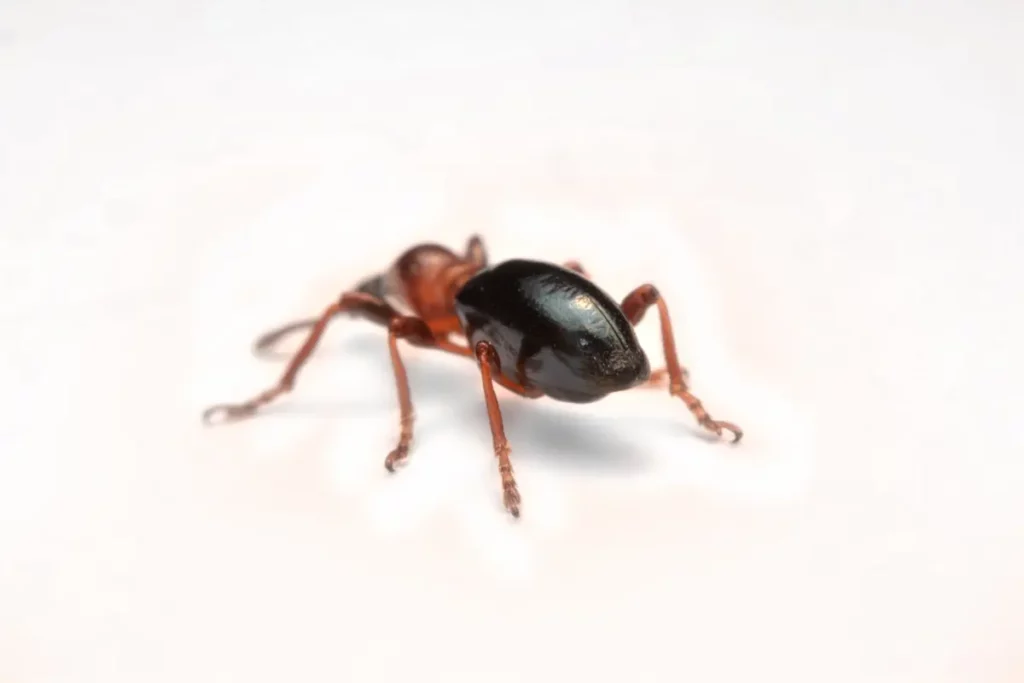
Starting our list, we have the acorn weevil. This describes not one particular species, but a whole genus called curculio.
The acorn weevil is a small animal; most don’t grow more than half an inch in length. It usually displays a light brown body with a subtle fur texture, and its face prominently features a long, elephant-like snout or trunk.
The acorn weevil’s unique life cycle is arguably the most fascinating part about this bug.
Using their long snout, female acorn weevils lay their eggs into fresh acorn seeds when they are still green and soft. By the time that the acorn turns hard and ripens, the larva of the acorn weevil will have already hatched and will spend the beginning phase of its life hollowing out the acorn from the inside for nourishment.
When it is done and the acorn has fallen from its branch, the weevil larva will chew itself out of the acorn seed and burrow itself underground, where it will remain until it transforms into an adult.
Acorn weevils are not dangerous for humans, and for collectors, they represent the opportunity for a unique-looking, albeit not an incredibly rare bug.
2. Khapra Beetle
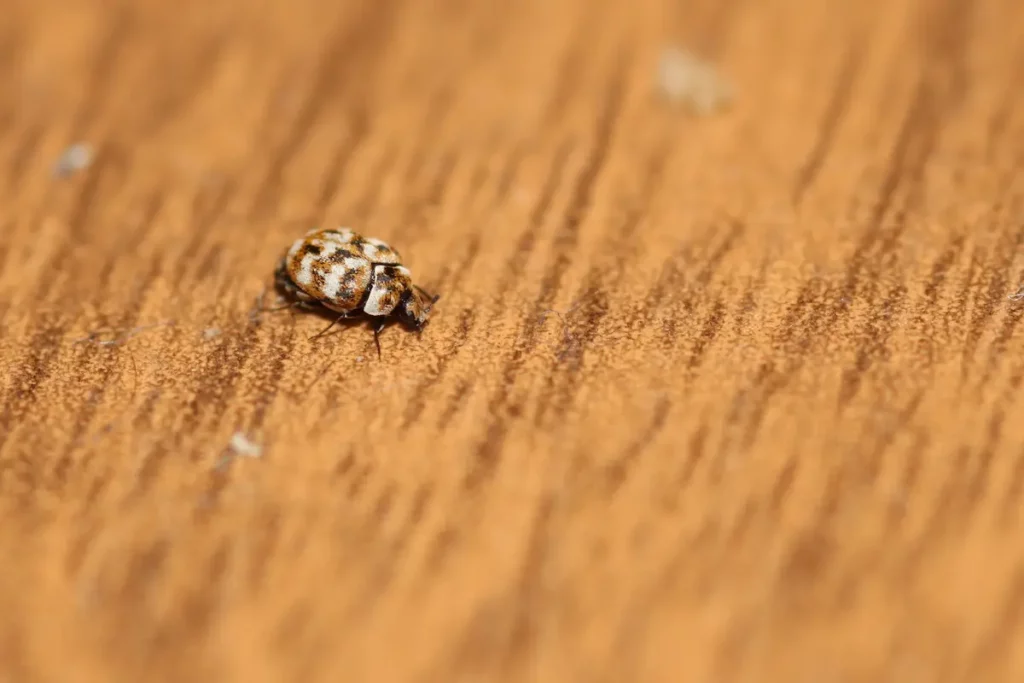
Up next, another fluffy little critter, though with a much more sinister demeanor. The Khapra beetle has been consistently ranked as one of the world’s most pervasive and dangerous pests – and for good reason. Originally native to South Asia, they have now become widespread in the Great Lakes area mostly through shipping of imported foods.
The Khapra beetle has the appetite of a king, and because it multiplies with immense efficiency, it can quickly decimate entire crops of grain. More than being a headache for farmers, however, the Khapra beetle is also considered a health risk. Over the course of its life cycle, it pupates multiple times, shedding skin, hair, and shells.
This can transmit into the grain products that the Khapra generally feeds on a variety of diseases, which eventually end up in our metabolisms and can thus become dangerous.
As such, when you spot this bug, it would be best to notify the CDC, or alternatively the USDA for pest control.
3. Firefly

Almost no other bug has captured the human imagination and inspired as many works of fiction, art, and culture, as the firefly. The glowing beetle with its distinctive red head and dark body is found all over the Northern and Northeastern regions of the United States, including many species native to Wisconsin.
When out on a summer night, keep your eye out for the dancing lights – just like in the movies, a swarm of fireflies is a sight to behold!
Thankfully, fireflies don’t pose any kind of threat to us. In fact, their larvae, which feed mostly on slugs, snails and worms, are quite useful as they serve an important role in keeping pests in check!
4. Dogbane Beetle
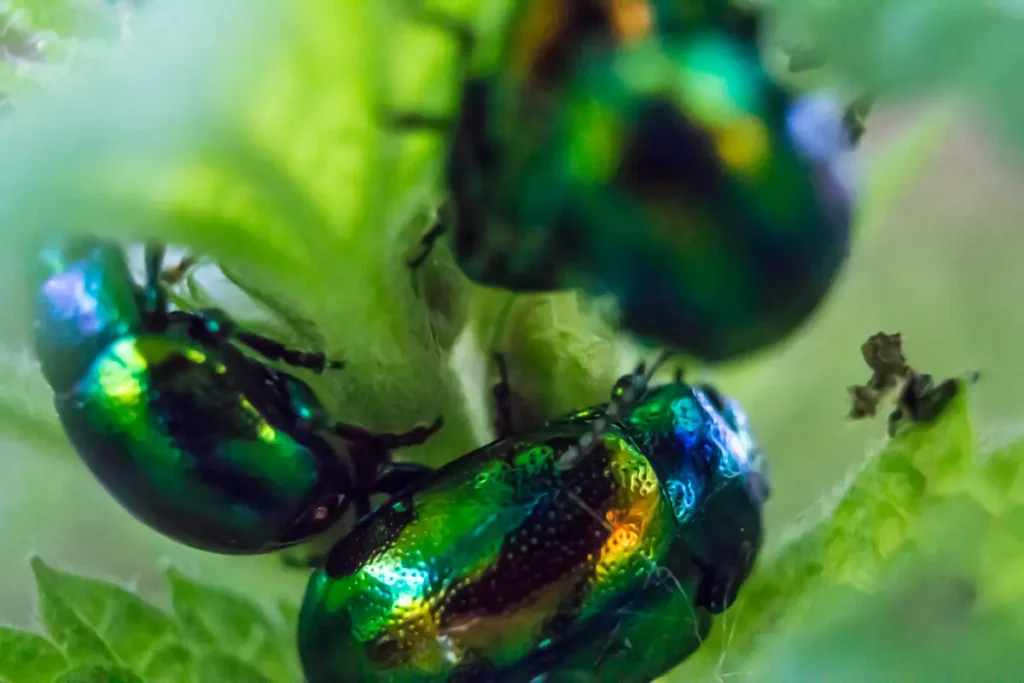
The dogbane beetle is part of the family referred to as leaf beetles. In this case, the dogbane beetle gets its name from the plant it is most commonly found feeding on the sap of. However, its diet is hardly the most impressive aspect of this little insect.
The dogbane beetle stuns and startles with its shiny green carapace that is iridescent – it shifts in color and brightness, producing shades of gold, red, copper, and other tones. Depending on which angle you inspect it from, the dogbane beetle’s carapace can shine in nearly every color of the rainbow!
Because of this, it has long been a favorite among bug collectors.
Though the dogbane beetle has an extensive life cycle and goes through many forms, it spends most of its existence feeding on its namesake host plant. As such, they are fairly easy to find.
5. Stag Beetle

A classic for bug collectors, stag beetles impress with their size as well as their distinctive jaws that are reminiscent of deer antlers. Like deer, only the males of this type of beetle grow their mandibles to this significant size.
However, against what conventional wisdom would have you believe, stag beetles cannot use these claw-like appendages as weapons, and they for sure can’t hurt us with them. Instead, they are used, much like antlers, as a display of strength, being integral to the beetles’ mating rituals.
Watch out for stag beetles flying around on hot, summer days, often close to brooks and rivers. It’s hard to miss them – most of the ones endemic to Wisconsin come in a variety of eye-catching colors, and their wings tend to emit a very loud buzzing noise as they fly by.
6. Goldenrod Soldier Beetle
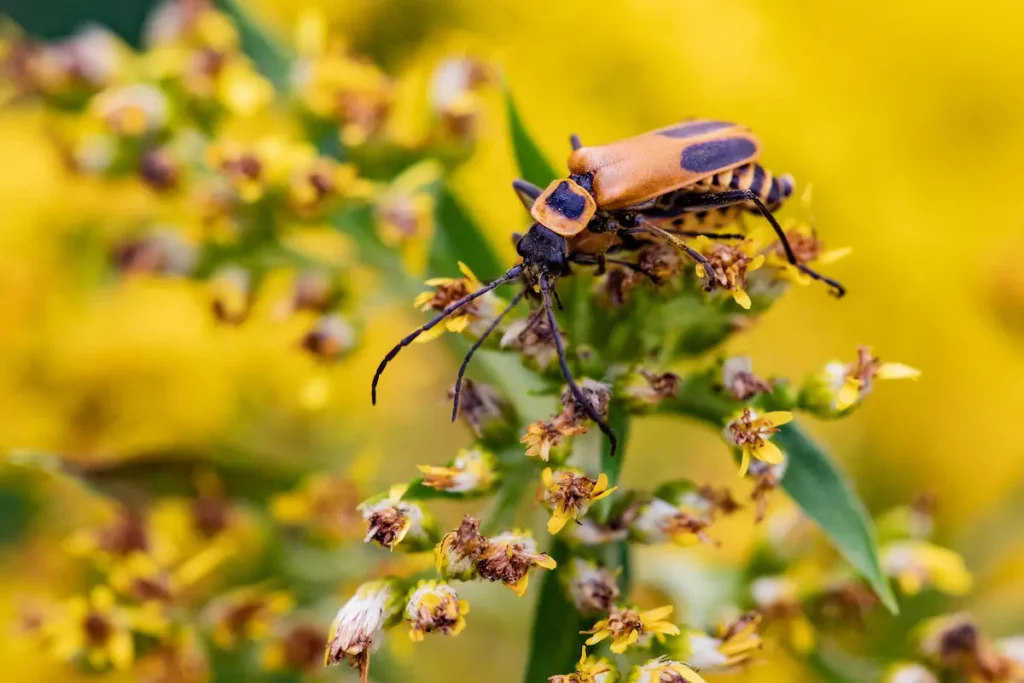
Here’s a common source of accidental mix-ups: the Goldenrod Soldier Beetle might look like a firefly at first glance, but if you take a closer look you will see that not only does the former exhibit a color scheme much heavier in yellow and golden tones, but it is also incapable of glowing!
Instead, the Goldenrod Soldier Beetle – which, despite appearances, is not related to fireflies at all – is a harmless omnivorous beetle that mainly feeds on other smaller insects. In doing so, it often spends long amounts of time sitting on flower petals waiting for prey to show up.
While the Goldenrod Soldier Beetle is in this state, it might feed on pollen or nectar from the flowers it uses as vantage points. This leads many to assume that these beetles are herbivores, but this is not the case.
What this means for us, though, is that it is rather easy to find a Goldenrod Soldier Beetle on any of Wisconsin’s plentiful outdoor trails. Just keep an eye out for their leathery wings peeking out from thick flower beds!
7. Tiger Beetle
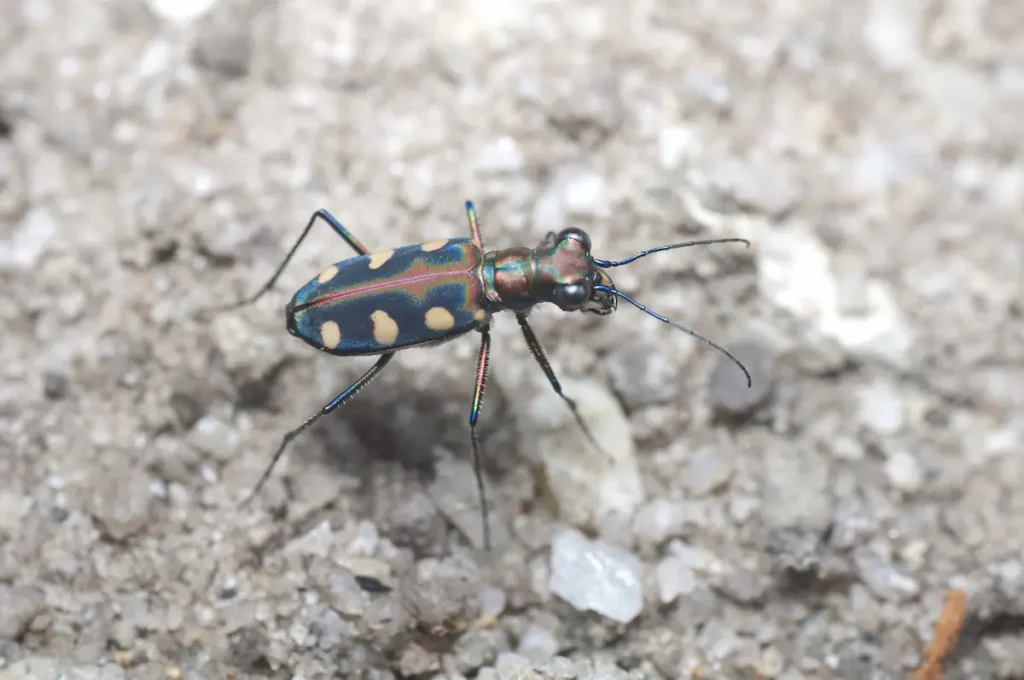
Here’s a challenge for all those who consider themselves excellent bug catchers. Tiger beetles are diminutive, little insects, and the bodies of most species are measured in fractions of an inch. But that is not the reason they are hard to spot.
Like tigers, Tiger Beetles are carnivores and sprint to catch their prey. However, these little critters pack so much grunt in their six legs, that they might just be overpowered.
By running at speeds of up to 5.5 miles per hour (which is over 100 times their body length per second!), the Tiger Beetle is not just fast enough to catch literally any prey in its natural habitat with ease – it is actually so fast, its own eyes can’t keep up.
This is why Tiger Beetles will often accelerate to top speed, run for a short amount of time, and then stop for a fraction of a second to turn around and find their bearings – only to launch ahead once more.
Due to this unique movement pattern, Tiger Beetles are almost impossible to spot, let alone to catch, outside of this tiny time window where they come to a halt and analyze their environment.
If you do manage, rest assured it’ll be worth it though. Tiger Beetles come in many shapes and colors, and those that can be found in Wisconsin – totaling over 15 different species – are all a sight to behold, with shiny, brilliant body plates and distinctive contrasting fur patterns.
Continue Reading: Where in the World Are There ZERO Mosquitoes?
